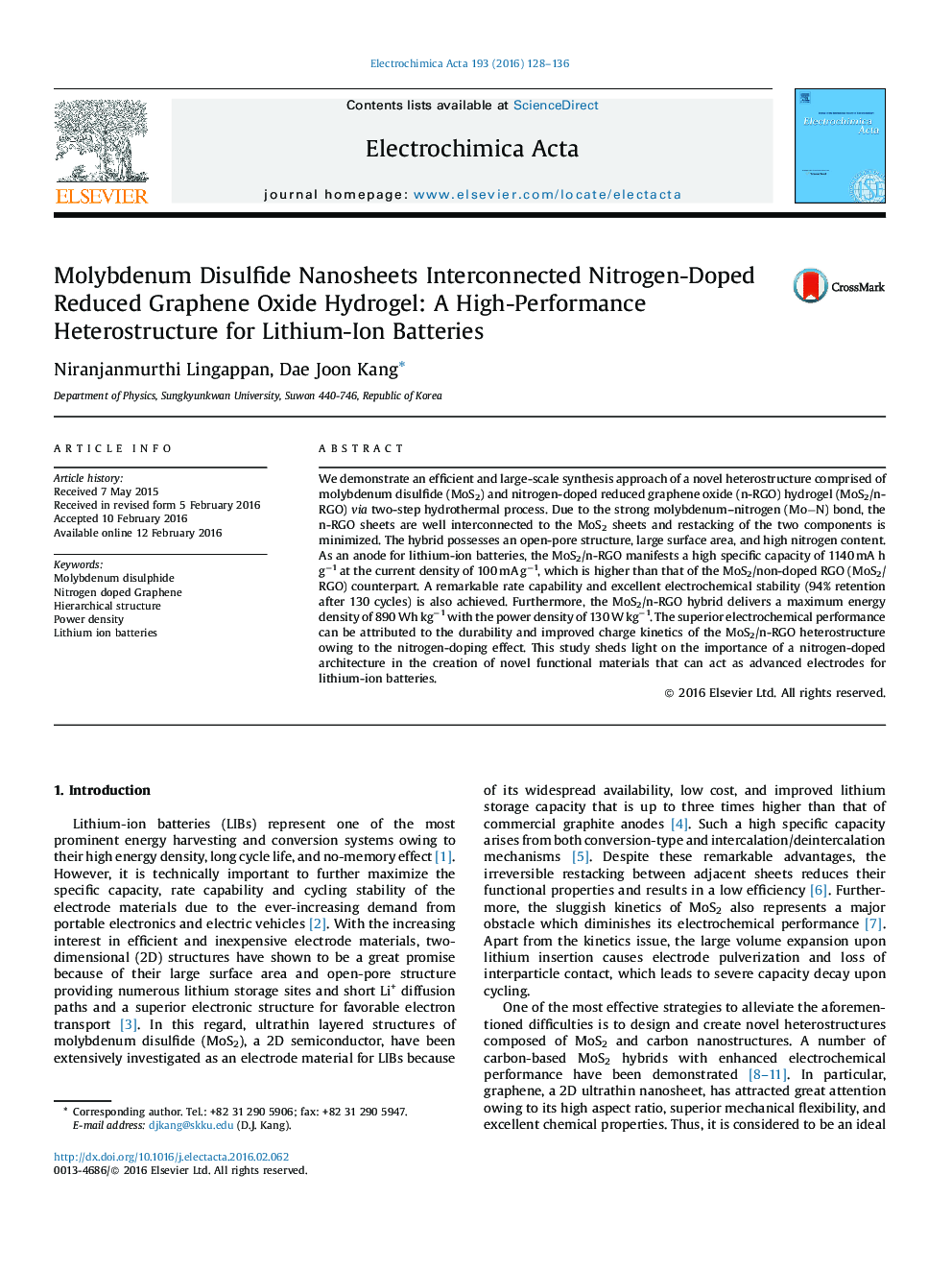| Article ID | Journal | Published Year | Pages | File Type |
|---|---|---|---|---|
| 183209 | Electrochimica Acta | 2016 | 9 Pages |
•MoS2/n-RGO hybrid was synthesized by two-step hydrothermal process.•The structure and morphology were investigated in detail.•Hybrid manifests excellent electrochemical properties.•It also exhibits high energy and power densities.
We demonstrate an efficient and large-scale synthesis approach of a novel heterostructure comprised of molybdenum disulfide (MoS2) and nitrogen-doped reduced graphene oxide (n-RGO) hydrogel (MoS2/n-RGO) via two-step hydrothermal process. Due to the strong molybdenum–nitrogen (Mo−N) bond, the n-RGO sheets are well interconnected to the MoS2 sheets and restacking of the two components is minimized. The hybrid possesses an open-pore structure, large surface area, and high nitrogen content. As an anode for lithium-ion batteries, the MoS2/n-RGO manifests a high specific capacity of 1140 mA h g−1 at the current density of 100 mA g−1, which is higher than that of the MoS2/non-doped RGO (MoS2/RGO) counterpart. A remarkable rate capability and excellent electrochemical stability (94% retention after 130 cycles) is also achieved. Furthermore, the MoS2/n-RGO hybrid delivers a maximum energy density of 890 Wh kg−1 with the power density of 130 W kg−1. The superior electrochemical performance can be attributed to the durability and improved charge kinetics of the MoS2/n-RGO heterostructure owing to the nitrogen-doping effect. This study sheds light on the importance of a nitrogen-doped architecture in the creation of novel functional materials that can act as advanced electrodes for lithium-ion batteries.
Graphical abstractFigure optionsDownload full-size imageDownload as PowerPoint slide
